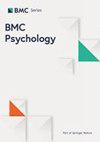Prediction of accident-proneness among a sample of Iranian workers: usefulness of an adjusted version of the Health Belief Model with spiritual health
IF 2.7
3区 心理学
Q1 PSYCHOLOGY, MULTIDISCIPLINARY
引用次数: 0
Abstract
Workforce health is one of the primary and challenging issues, especially in industrialized countries. The purpose of the present study was to evaluate the ability to predict accident-proneness among Saveh Industry workers in Iran, based on an extended Health Belief Model, that included the construct of spiritual health. This descriptive-analytical study was conducted in 2022 on 384 workers in Saveh, Iran. The study aimed to explore relationships between accident proneness behavior, spiritual health, and health beliefs. The accident-proneness questionnaire consisted of two parts: the first part included demographic questions, and the second part comprised 9 sections covering personality traits, workplace harmful factors, miscellaneous factors, musculoskeletal disorders, safety culture, safety attitudes, job stress, organization interest, and degree of risk-taking. The Health Belief Model included 31 questions, while spiritual health was measured with the 20-question Paloutzian and Ellison questionnaire. The collected data were analyzed using SPSS version 26 software. In terms of accident proneness, 229 (59.6%), exhibited high levels, 148 (38.5%) had medium levels, and 7 (1.8%) showed low levels of accident-proneness. Hierarchical multiple regression analysis showed that in the first model, variables of perceived self-efficacy, vulnerability, and severity independently predicted workers accident proneness, explaining a total of 43% of variance in accident proneness behavior. In the second step, perceived self-efficacy (β = 34%), perceived sensitivity (β = 27%), spiritual health (β = 16%), and perceived severity (β = 12%) were included, respectively, which explained a total of 46% of the variance of accident-prone behavior of workers. Given the high rate of accident proneness observed in this study, there is a critical need for policymakers and health planners to design policies aimed at mitigating the risks associated with occupational accidents. Furthermore, the findings highlight the potential of integrating spiritual health into the Health Belief Model, as a conceptual framework for planning effective intervention programs to enhance workplace safety.伊朗工人样本中事故倾向性的预测:调整版健康信念模型与精神健康的实用性
劳动力健康是首要和具有挑战性的问题之一,尤其是在工业化国家。本研究的目的是根据扩展的健康信念模型,评估预测伊朗萨韦赫工业工人事故倾向性的能力,该模型包括精神健康的概念。这项描述性分析研究于 2022 年在伊朗萨韦赫的 384 名工人中进行。研究旨在探讨事故倾向行为、精神健康和健康信念之间的关系。事故倾向问卷由两部分组成:第一部分包括人口统计学问题,第二部分由 9 个部分组成,涵盖人格特质、工作场所有害因素、其他因素、肌肉骨骼疾病、安全文化、安全态度、工作压力、组织兴趣和冒险程度。健康信念模型包括 31 个问题,而精神健康则通过 20 个问题的 Paloutzian 和 Ellison 问卷进行测量。收集到的数据使用 SPSS 26 版软件进行了分析。在事故易发性方面,229 人(59.6%)表现为高水平,148 人(38.5%)为中等水平,7 人(1.8%)为低水平。层次多元回归分析表明,在第一个模型中,感知自我效能、脆弱性和严重性变量独立地预测了工人的事故倾向,共解释了事故倾向行为方差的 43%。在第二步中,分别加入了感知自我效能(β = 34%)、感知敏感性(β = 27%)、精神健康(β = 16%)和感知严重性(β = 12%),这些变量共解释了工人事故易发行为46%的变异。鉴于本研究中观察到的高事故易发率,政策制定者和卫生规划者亟需制定旨在降低职业事故相关风险的政策。此外,研究结果还凸显了将精神健康纳入健康信念模型的潜力,以此作为规划有效干预计划的概念框架,从而加强工作场所的安全。
本文章由计算机程序翻译,如有差异,请以英文原文为准。
求助全文
约1分钟内获得全文
求助全文
来源期刊

BMC Psychology
Psychology-Psychology (all)
CiteScore
3.90
自引率
2.80%
发文量
265
审稿时长
24 weeks
期刊介绍:
BMC Psychology is an open access, peer-reviewed journal that considers manuscripts on all aspects of psychology, human behavior and the mind, including developmental, clinical, cognitive, experimental, health and social psychology, as well as personality and individual differences. The journal welcomes quantitative and qualitative research methods, including animal studies.
 求助内容:
求助内容: 应助结果提醒方式:
应助结果提醒方式:


